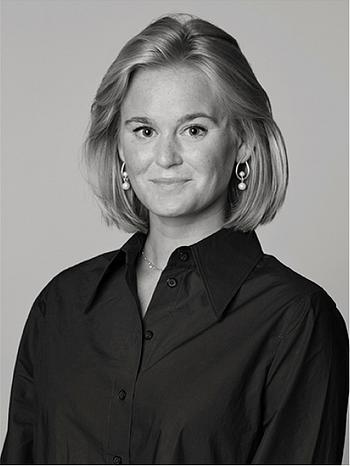Lotte Laserstein
Self-portrait
Signed Lotte Laserstein and dated 1951. Canvas 33 x 41 cm.
Provenance
Purchased directly from the artist in the 1980s.
Thereafter inherited within the family.
More information
Lotte Laserstein was born in East Prussia. Her father passed away in 1902, and she was raised by her mother and grandmother in what is now Gdansk and Berlin. In 1927, she graduated from the Art Academy in Berlin, being one of the first female students, and immediately achieved great success. She quickly gained recognition in the city's art scene for her skilled portrait painting, especially of young modern women in the Weimar Republic of the 1920s. However, when the Nazis came to power in 1933, her promising career was interrupted due to her being categorized as 3/4 Jewish according to the prevailing ideology at the time. Despite her parents not being Jewish, her grandparents were, which led to her increasing exclusion from the art scene.
An invitation to exhibit at the Galerie Moderne in Stockholm in 1937 provided her with an opportunity to leave her homeland. She traveled from Berlin in 1937, managing to ship a majority of her artworks to Stockholm. The exhibition was held, allowing her to stay in Sweden on a three-month visa. In Stockholm, she made new friends, some of whom helped her to a sham marriage, in order to acquire Swedish citizenship.
In Stockholm, Laserstein attempted to build a new life primarily through commissioned portrait work. However, she struggled to integrate into the new art circles dominated by modernism and abstract painting. Her consistent adherence to realism during a time dominated by artistic abstraction likely contributed to her lack of breakthrough in Sweden. Despite her classical academic training, her work often referenced art history. Yet, during her artistically expansive period of the 1920s and 1930s, she also drew inspiration from contemporary popular culture, portraying modern emancipated women engaging in sports or sitting alone in cafes.
Laserstein's art falls within the genre of "Die Neue Sachlichkeit," simultaneously traditional and discreetly rebellious. Throughout her life, she painted around 2000 portraits, sustaining herself solely through her art. Her clientele included well-known figures in aristocracy, politics, business, and culture.
In 1952, Laserstein received a commission to paint the then governor and his wife of Kalmar, Ruben and Helga Wagnsson, which led her to split her time between Kalmar and Stockholm. She developed an affinity for Öland, where she purchased a summer cottage in the early 1950s. She permanently settled in Kalmar in 1957, continuing to paint portraits along with still lifes and landscapes.
Laserstein's work gained international recognition in 1987 with exhibitions at two prestigious galleries in London, marking the beginning of an international rediscovery. In 2003, she was also recognized in Germany through an exhibition at the Museum Ephraim-Palais in Berlin.
The exhibition "A Divided Life," held from November 11, 2023, to April 14, 2024, at the Moderna Museet in Stockholm, curated by Anna-Carola Krausse and Iris Müller-Westermann, was the largest exhibition of Laserstein's art in the Nordic region to date.
Throughout her career, Lotte painted portraits of herself, her friends, and later in Sweden, she sustained herself by painting commissioned portraits. Her portraits consistently convey a strong presence and a timeless relevance, leaving viewers deeply moved. One of her magnetic self-portraits, executed in 1951 when Lotte was 53 years old, captures only her expressive face, leaving a lasting impression on the observer.










































